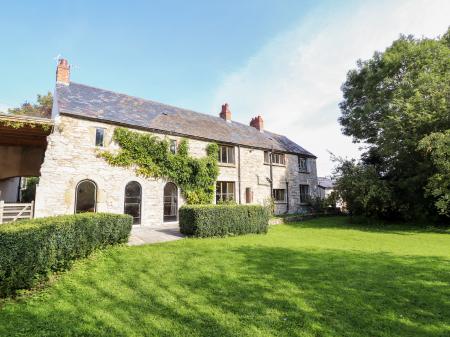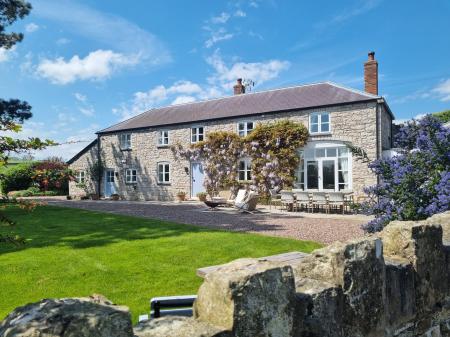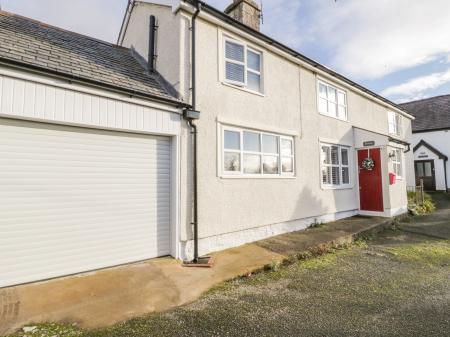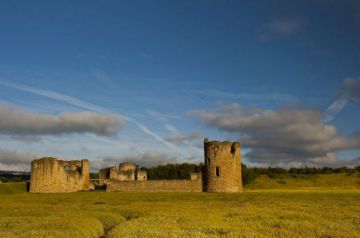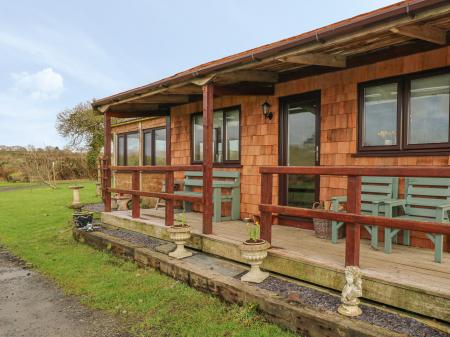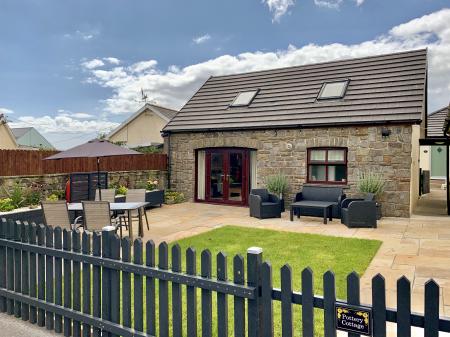
When the Normans resumed work after retaking Denbigh, they used a different coloured stone and built more substantial walls, so that the later work is easily distinguished from the earlier foundations at Denbigh.
Denbigh's most striking feature is the Great Gatehouse, comprised of no less than three towers. The gatehouse is probably the work of Edward's master builder, James of St. George. Long sections of the Denbigh town walls also remain.

The name 'Denbigh' loosely translates as 'little fortress', and it seems there was a fortress atop the hill since at least the Iron Age. The first known fortress near here was probably at Llys Gwenllian a mile to the south.
The current castle site was first fortified by the Welsh in the late 12th or early 13th century, but we do not know who built it. We do know that it was briefly occupied by Dafydd ap Gruffudd, the treacherous brother of Llewelyn ap Gruffudd.
Daffydd was granted tenancy by Edward I after supporting the English king against Llewelyn in 1276-7. However, Dafydd rebelled in 1282 and Edward quickly marched into Clwyd and captured Denbigh. He granted the castle lordship to de Lacy, Earl of Lincoln, and instructed him to build a new castle with a walled borough. It was probably unfinished when Madog ap Llewelyn seized it in 1294, but it was quickly retaken by the English.
Denbigh was garrisoned by the Yorkists in the Wars of the Roses, but taken by Jasper Tudor for the Lancastrian cause. ICharles II sought refuge here during the English Civil War, but the castle eventually fell to Parliament.
Visiting
I was incredibly impressed by Denbigh Castle - and by the town as a whole. The location is utterly magnificent, on a high crag of rock, with simply wonderful views over the surrounding valleys. In the evening people come up to the field below the castle gatehouse to picnic on sunny days, and you can see why.
You can climb to the top of the wall and walk around a large section of the parapets, and the views are just fabulous. I came back two or three times over the course of a week in the area, just trying to capture photos of the castle in nice light, and I grew to enjoy the location more each time.








 We've 'tagged' this attraction information to help you find related historic attractions and learn more about major time periods mentioned.
We've 'tagged' this attraction information to help you find related historic attractions and learn more about major time periods mentioned.